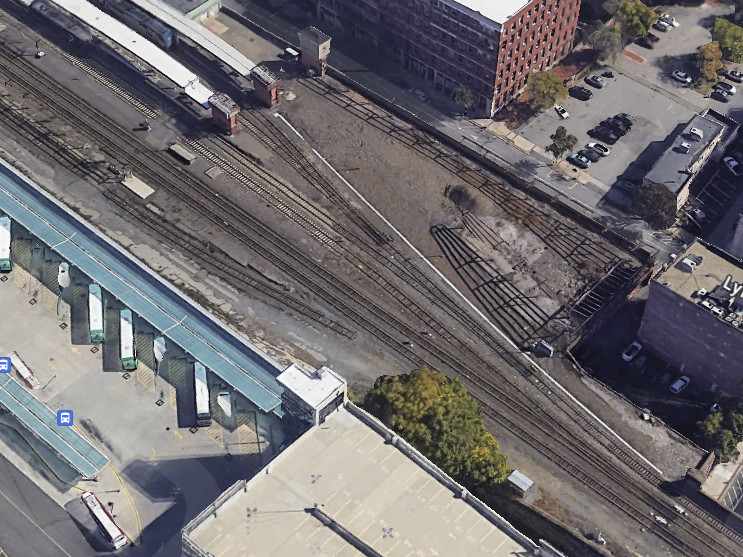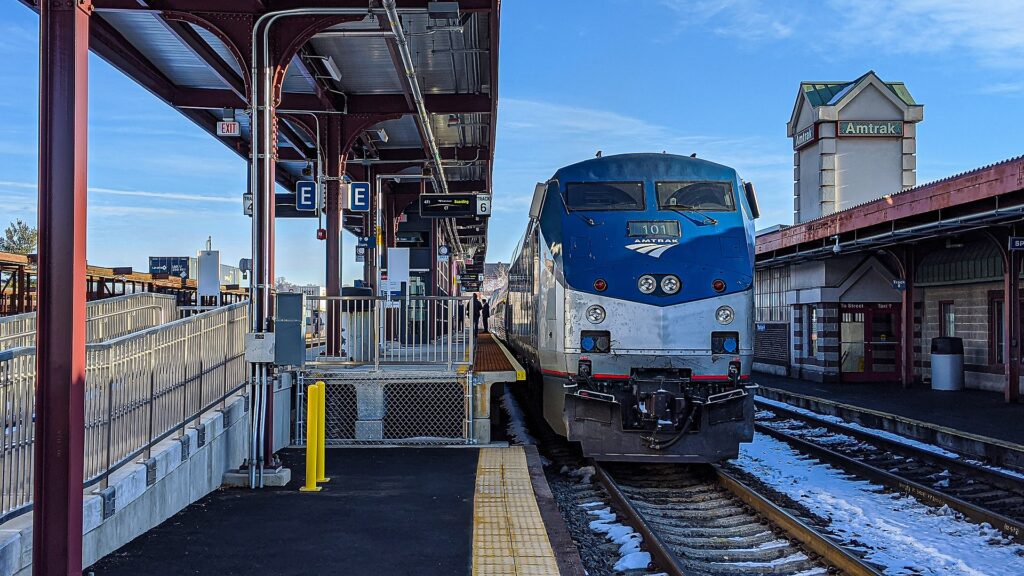The Trans-Commonwealth RR: It’s Raining Rail Grants, but to What End…?
The Trans-Commonwealth Railroad is a series on the challenges and efforts to connect the length of Massachusetts by rail.
Last week, Congressman Richard Neal and officials from the state announced nearly $37 million for the Springfield Area Track Reconfiguration Project (SATRP). It was not the first batch of money for the project, which will rework the tracks and junctions just west of Union Station in Springfield. However, the new money will fund SATRP through design.
Redesigning the junction is necessary to fully realize Compass Rail, the formal name the Massachusetts Department of Transportation now uses for full East-West rail service. The name highlights the various directions service can go from Springfield. SATRP will facilitate those options and improve north-south service. The torrent of grants can become confusing with regard to what they fund and what they do not.
An earlier round of the US Department of Transportation’s Consolidated Rail Infrastructure and Safety Improvements (CRISI) program had allocated $1.75 million to the project. That was only for preliminary engineering. The new money will complete design work. Actual construction is not funded.
“This award moves us one step closer to making West-East Rail a reality,” Governor Maura Healey said in a statement announcing the funds. “Our team at MassDOT and our entire administration has been aggressively competing for every opportunity to bring home federal dollars to our communities, and we keep winning.”
Neal, first announcing the funds in a statement on October 24, recalled the East-West rail funding last year.
“Just one year ago, I joined Governor Healey at Springfield Union Station to announce a $108 million CRISI grant to support West/East Rail,” he said. “This funding will increase capacity and improve efficiency at Springfield Union Station, preparing for what USDOT has described as ‘anticipated growth in regional rail service.’”
MassDOT received that $108 million—plus matches from the state and Amtrak—for startup service from Boston to Springfield. This will fund a series of smaller projects along the line between Springfield and Worcester to allow more passenger trains along the route.
The nearly $40 million for SATRP, however, only covers pre-construction activity.
The preliminary engineering the $1.75 million the state matched and received in 2022 should conclude by next summer. Encompassing various technical assessments, preliminary engineering is part of the project development phase.
The roughly $37 million for design will produce a price tag for the overall project. At that point, it will become “shovel-ready” for MassDOT. However, the design timeline could run into 2028.
Reconfiguring the tracks in Springfield may not be quite as ambitious other state rail projects. SATRP will only realign the track geometry and make improvements around Union Station. This will allow trains bound for or arriving form multiple directions to use more platforms.
For example, trains from Vermont and Greenfield pass the station and move onto the tracks to New Haven. Then, trains back into Union Station. There is a track that swings directly into the station from points north. However, it connects to no active platforms right now. SATRP also aims to add additional active, high-level platforms and add layover tracks in anticipation of further service expansion.
Amtrak did not comment on any direct role in the project. However, it is working on rehabilitating interlockings that will feed into it. A spokesperson noted that SATRP will improved existing service and facilitate more service to Albany and Boston.
“We’re excited our partners at MassDOT are receiving this grant, which will both improve the reliability of the existing Amtrak trains that serve Springfield, and pave the way for the expansion of Compass Rail,” Amtrak spokesperson Jason Abrams emailed.
However, any major project in an active rail corridor will be a complex endeavor. In other words, the SATRP work is not likely to be done—assuming it receives sufficient funds promptly—until after East-West service begins. That is currently slated for 2029.
East-West rail service is all but inevitable for the simple reason that it has funding. However, it is still half a decade away.
At a press conference with Neal and the state legislative delegation, Andy Koziol, MassDOT’s director of West-East Rail, warned that projects take time. This is certainly true in North America, but it is less clearly the case by global standards.
Massachusetts has several more rail projects in the hopper beyond Compass Rail. Theselong timelines for relatively inexpensive projects, including many that have languished for years, could begin to draw scrutiny. It may not be MassDOT’s fault per se, but should residents accept that? If not, they may agitate for change to the fullest extent possible and spur the political branches to act.

